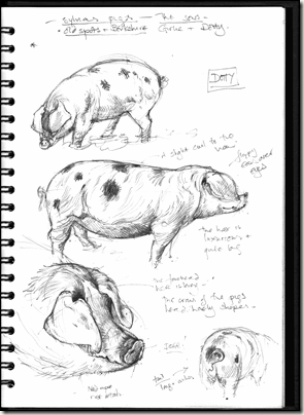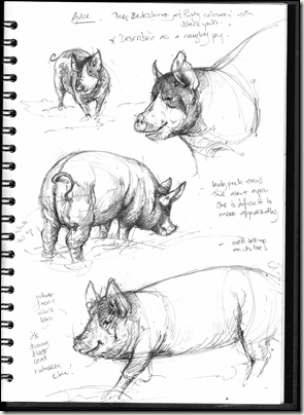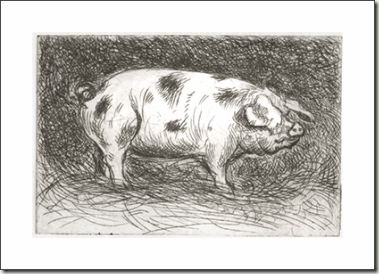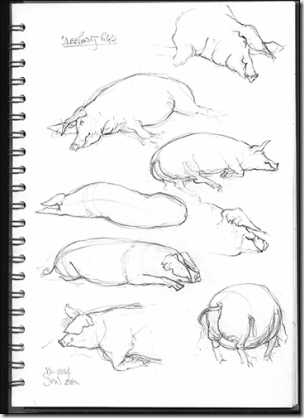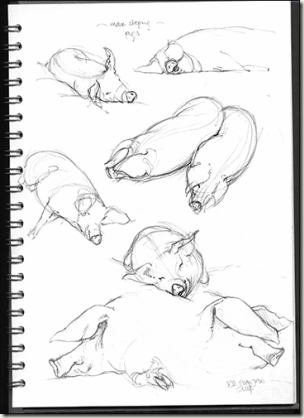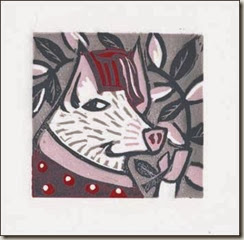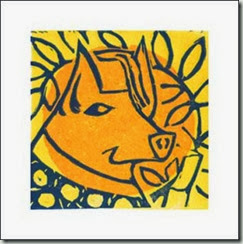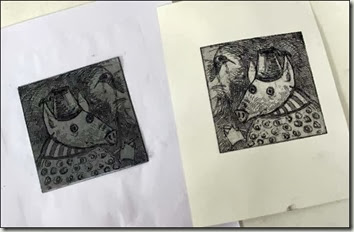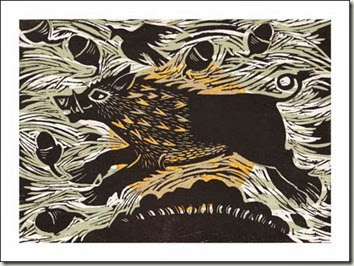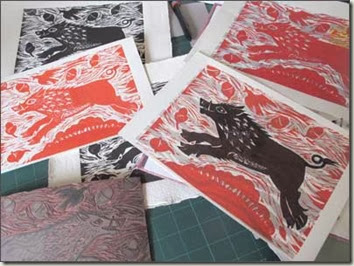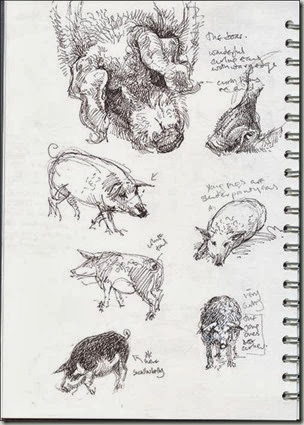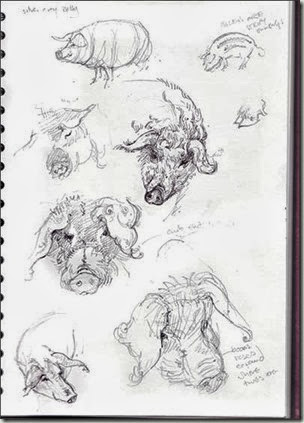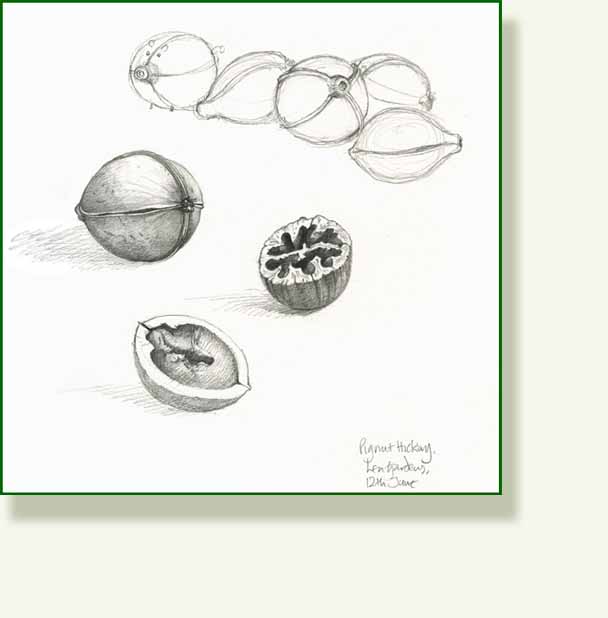As part of our quest to find happy pigs we recently visited Sylvia and John’s Garden Farm at Old Weston.
Sylvia introduced us to her two sows, Girlie the bright little Berkshire and Dotty the Gloucester Old Spot.They are delightful.
Gloucester Old Spots and Berkshires are Chris’ next pigs for Salute the Pig. It was very very muddy .. as it is everywhere at the moment but pigs are happy in mud:).
Spotty Dotty with her long lop ears which cover her eyes.
Girlie the bright and sparky little Berkshire. A4 sketchbook.~
Sylvia was telling us that she was a handful to move and in one pig book the young Berkshires are described as “naughty”.
Both of the pigs have quite luxurious hair. Perhaps Dotty’s hair was slightly silkier. They feel wonderful. I also worked some more on the acetate printing plate and made some darker prints, with some interesting results.
Dotty: etching 6 x 4 inches
I am impressed by the sensitivity of the thin plastic. I am sure the number of prints is limited. I am going to show the various stages over at Print Daily. So far the things I love about pigs are their ears, their noses and their bright eyes. T
he sketches are so useful for understanding how pigs are put together. I did exactly the same when I started drawing bees. These initial studies pay off many fold and they are a pleasure to do.
I am discovering that pigs are all very different. face shapes, ears, coats, body shapes etc. I hope to return to Garden Farm. They have lovely chickens too and in due course there will be piglets!

